Atherosclerosis is a disease caused by narrowing and hardening of the blood vessels due to the accumulation of plaques in the artery. It is, also known as vascular calcification, can cause serious problems by disrupting the blood flow in body. In advanced blockages, permanent damage to vital organs such as the brain, heart and kidney can occur. Atherosclerosis progresses slowly and may not show symptoms for a long time. You may be in the risk group for atherosclerosis if you experience chest pain after a little effort, pain in your legs after walking or if you have a family member who has an heart attack and stroke at an early age. Factors such as smoking, diabetes, and high cholesterol may also increase the risk of disease. With lifestyle changes and medications, patients can continue their normal lives. However, a surgery may be required in some risky situations.
Table of Contents
What is atherosclerosis?
It is a common disease that develops due to plaques accumulated in the arterial walls and is also known as vascular calcification. Plaques are mainly composed of substances such as fat cells, cholesterol, cellular waste, calcium, etc. The arterial wall attached to these plaques thickens and hardens.
Arteries are blood vessels that carry blood rich in oxygen and nutrients from the heart to other tissues and organs of the body. Plaques accumulated in the arterial wall decrease the blood flow to tissues and organs over time. Plaques sometimes break down to form a blood clot, causing serious problems such as stroke.
Stages of atherosclerosis
The arterial wall consists of several layers. The innermost of these layers is called the endothelium. It has a smooth and continuous structure. Atherosclerosis starts when this layer is damaged. When the blood vessel wall is damaged, some white blood cells become active and move into the arterial wall. In the endothelial layer, these cells turn into foamy cells, which are mainly composed of cholesterol and fatty material.
In time, the smooth muscle cells in the middle layer go towards the endothelial layer and accumulate there. Cell residues, cholesterol crystals and calcium also accumulate in the inner layer. The irregular accumulation of these fat-laden cells, smooth muscle cells and other materials is called “atherosclerotic plaque”.
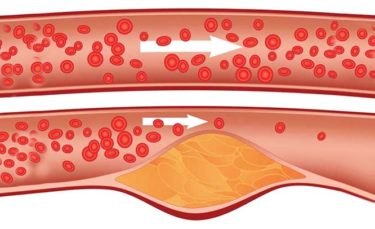
Causes of atherosclerosis
- Having people in the family who developed early atherosclerosis (genetics)
- Advanced age
- Being a man
- Smoking
- High cholesterol levels in the blood
- Hypertension (High blood pressure)
- Diabetes
- Obesity
- Still life style
- Not enough consumption of fruits and vegetables
- Excessive consumption of alcohol
Symptoms of atherosclerosis
Atherosclerosis starts in childhood. Often, it does not show any symptoms until the plaque breaks down or completely clogs the blood flow. Symptoms vary depending on which blood vessel is affected.
Symptoms of carotid atherosclerosis
Carotid artery carries blood to the brain. Here are the symptoms of decreased blood flow:
- Paralysis
- Weakness
- Headache
- Facial paralysis
- Speech Difficulty
- Imbalance
- Loss of vision
- Dizziness
Symptoms of coronary artery atherosclerosis
- Heart attack
- Chest Pain
- Feeling of aggravation
- Sweating
- Vomiting
- Extreme panic
- Cough
Symptoms of renal atherosclerosis
- Swelling of hands and feet
- Hypertension
- Loss of appetite
- Kidney failure
Symptoms of peripheral atherosclerosis
- Weakness of arms and legs
- Pain during movement
- Heat loss, coldness in arms and legs
- Bruises and wounds on fingers
Individuals who are at risk of atherosclerosis should always have regular checks for early diagnosis. Atherosclerosis is a disease that does not show much signs at the initial stage.
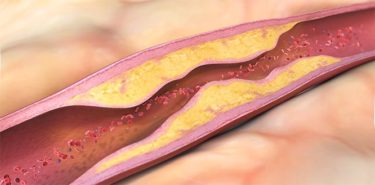
Diagnosis of atherosclerosis
When making the diagnosis, the patient’s medical history, physical examination and test results are evaluated.
Medical history
The risk of hardening of the arteries is higher in people who smokes, are overweight, have diabetes, or high blood pressure. For correct diagnosis, it is very important that people give the doctor the correct information about how much they smoke or family history about heart disease. If there is a suspected condition, the doctor will refer to other diagnostic methods.
Physical examination
- The patient’s blood pressure is first measured. Body mass index is determined by measuring his/her height and weight. Patients with high blood pressure and high body mass index have a higher risk of developing vascular stiffness.
- The doctor listens to the suspected arteries of the patient through a stethoscope. In this way, “murmur” due to impaired blood flow can be heard. This sound is a sign that the plaque blocks the blood flow. When blood vessels are examined, a very weak pulse is obtained. Sometimes there is no detectable pulse. Imaging methods are then used for this purpose.
- If there are non-healing wounds where blood flow is restricted, these wounds are also evaluated for atherosclerosis.
Blood tests
Blood sugar and cholesterol levels are measured. If cholesterol and sugar levels are high, this indicates a high risk of developing atherosclerosis. Blood enzyme and hormone levels are also checked in the blood.
Imaging tests
- Electrocardiogram (ECG): It is also known as cardiac radiography. If there is a suspicion of atherosclerosis in the heart veins, ECG is taken.
- Ultrasound: Ultrasound evaluates blood flow velocity and blood pressure in the arteries.
- Computed tomography: It is used to detect the narrowing and hardening of the blood vessel.
- Chest X-ray: The symptoms of heart failure can be revealed by taking chest x-ray of organs and structures such as inside the chest, heart, lung and blood vessels.
- Ankle brachial index: This test compares the blood pressure in the ankle with the arm’s blood pressure to see how well the blood flows.
- Stress test: This test is used to gather information about how well the heart works during physical activity. Heart rhythm, blood pressure and breathing are monitored while the person is walking on a treadmill or riding an exercise bike.
- Angiography: Angiography uses dye and special x-rays to show the interior of your arteries. A thin and flexible tube called a catheter is inserted into a blood vessel in the arm, groin or neck. The dye, which can be seen on the X-ray image, is injected through the catheter into the arteries. With this method, the doctor can see the blood flow in the vessels. This test can show whether the plaque is blocking arteries, and what its size is.
Treatment of atherosclerosis
Atherosclerosis treatment begins by recognizing the importance of this disease. There is no definitive treatment to restore vascular stiffness. The aim of the treatment is to prevent the disease from getting worse. The main methods used in the treatment of atherosclerosis are:
Atherosclerosis medications
Blood thinners can prevent plaque formation and blood clotting. They reduce the risk of heart attacks and strokes. However, blood thinners should be used under the doctor’s recommendation. Statins (cholesterol-lowering drugs) are used in people with high cholesterol. High blood pressure treatment is also done with antihypertensive drugs. Medications for diabetes are also used in people with high blood sugar levels.
Atherosclerosis surgery
Surgery can be used as an effective treatment method for people with severe blockages or heart attacks and strokes. The decision of surgery is taken according to the patient’s condition and urgency.
- Angiography: The degree of obstruction is measured by angiography and stents may be implanted in those who meet certain criteria.
- Bypass operation: In patients who cannot be treated with angiography, bypass surgery is performed. It is a very useful method in correctly selected patients.
- Carotid endarterectomy surgery: Intervention is required when carotid artery occlusion is concerned. If necessary, stents can be inserted into the carotid artery. In addition, intravenous cleaning can be performed.
Herbal treatment of atherosclerosis
First of all, a doctor’s advice should be taken for safety reasons before any herbal treatment is tried. If it is to be started, it should be started under the supervision of a doctor. The contents of some herbal treatments may alter the effect of drug treatment (especially cholesterol-lowering drugs) and may cause harmful side effects.
The main point of herbal therapies is to affect vascular stiffness by reducing cholesterol and high blood pressure. First, foods containing saturated fatty acids should be avoided. Foods such as olive oil, walnuts, hazelnuts, avocados and fish oil can prevent atherosclerosis from getting worse by lowering cholesterol.
In addition, even though absolute statements are made by traditional Chinese medicine about tens of foods and drinks that are used to prevent atherosclerosis and completely open the veins, National Center for Complementary and Integrative Health says that more studies and evidence are needed about these claims.
Which diseases does atherosclerosis cause?
- Angina (chest pain) and heart attack
- Heart failure
- Heart rhythm disorder
- Stroke
- Kidney failure
- Pain and cramps in the legs
- Gangrene and non-healing wounds
Is atherosclerosis fatal?
Atherosclerosis itself is not fatal. However, diseases caused by atherosclerosis-related organ damage can be fatal. For example, the patient may die as a result of a heart attack due to arteriosclerosis.
Atherosclerosis and cholesterol
Cholesterol is a waxy, yellow, fat-like substance found in all cells. It is inherent in the body and is found in some foods such as red meat, eggs, butter. Cholesterol is necessary in the formation of vitamin D and some hormones. So it needs to have certain levels in the body. However, its high level can cause many diseases, especially atherosclerosis.
What is good cholesterol and bad cholesterol?
LDL (bad cholesterol) transports cholesterol from the liver to the veins, which causes hardening of the vessels. High LDL level accelerates the formation of arteriosclerosis. HDL (good cholesterol) takes cholesterol from the blood vessels and brings it to the liver, which reduces the hardening of the vessels. When HDL level drops, cholesterol excretion decreases and the risk of arteriosclerosis increases.
Nutrition in atherosclerosis
- Avoid fast food.
- Feed on unsaturated fatty acids and fibre foods such as olive oil, avocado, walnuts, hazelnuts and fish.
- Reduce your intake of salt and sugar.
- Consume more fruits and vegetables.
Prevention of atherosclerosis
- If you think you are in a risk group, first consult a doctor and have yourself checked.
- No smoking: Smoking is one of the major risk factors for atherosclerosis. You can get support from health officials to stop smoking.
- Maintain a healthy weight: The required body mass index (BMI) is between 18.5 and 24.9. More weight creates a higher risk for atherosclerosis.
- Eat healthy: Eat heart-friendly foods that contain omega-3, unsaturated fatty acids and fibre foods. Instead of saturated fatty acids, prefer olive oil. Avoid trans fats.
- Keep your blood pressure and cholesterol levels under control
- Avoid alcohol consumption
- Avoid stress in your life
Recommendations for atherosclerosis patients
- Exercise regularly. For example, walking is important in the treatment of atherosclerosis-related peripheral artery disease (stiffness of the arm and leg veins). A walking program can be arranged with doctor’s recommendations. Exercise is also important because of its lowering effect on blood pressure and its contribution to weight loss. Excessive effort should be avoided during exercise. If atherosclerosis in the heart vessels is advanced, excessive effort can trigger a heart attack.
- Talk to family and friends about changes in your lifestyle. They can help you. For example, you can ask them for help in arranging meals, losing weight or quitting smoking. In addition, atherosclerosis can be genetically inherited, and changes in your lifestyle may also help other family members. For more: >>> Atherosclerosis

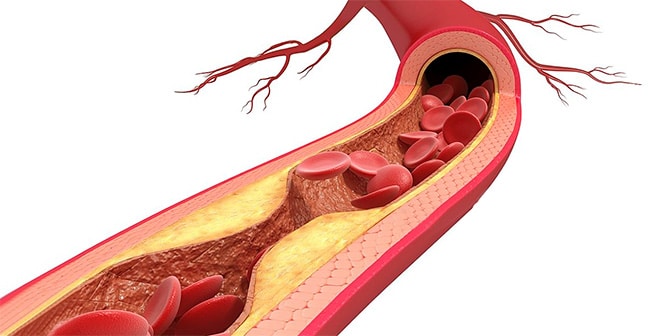
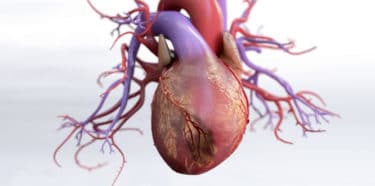
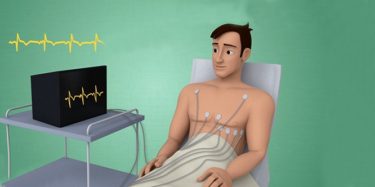
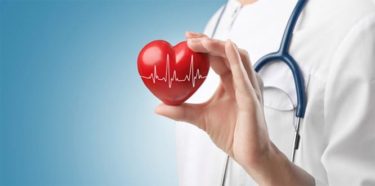
I have Ischemia in my toes and to day very painful, it is spreading now three toes are affected left foot. I was referred to my local Cardio Vascular consultant and the appointment is now for May 26th 2020 at 3.25pm. Im trying to fined any help to ease the… Read more »